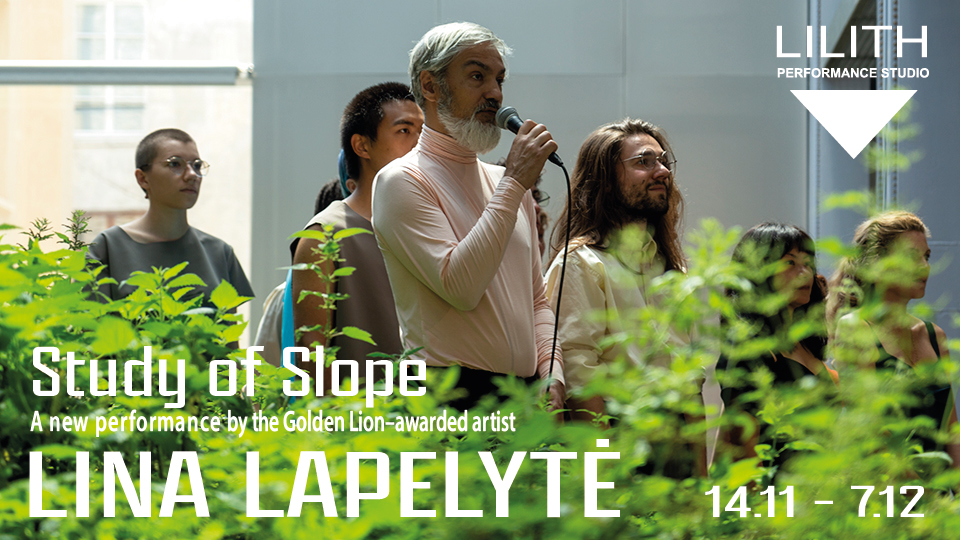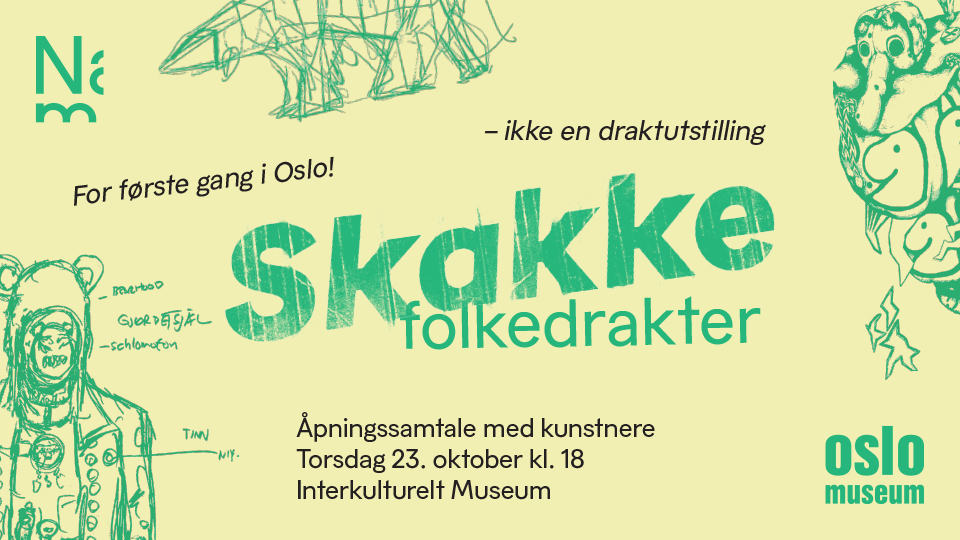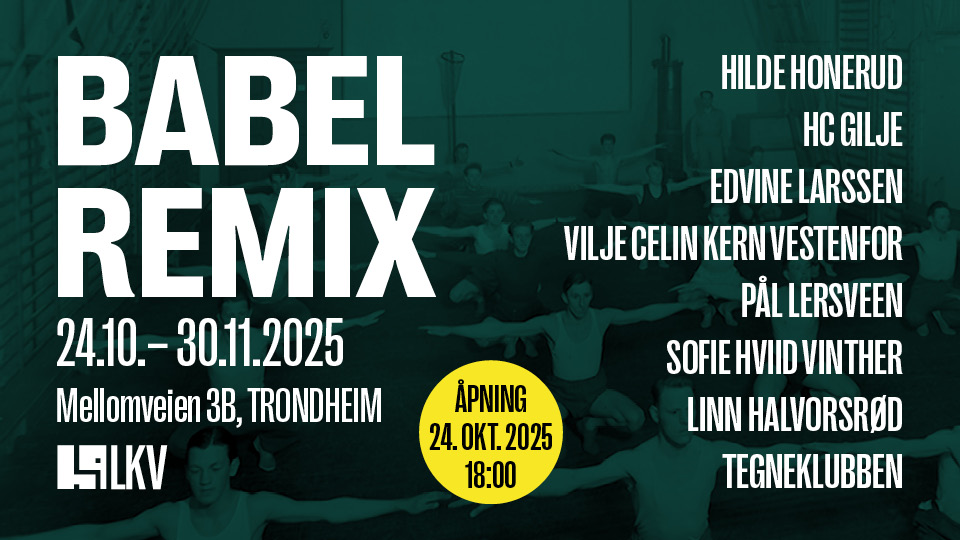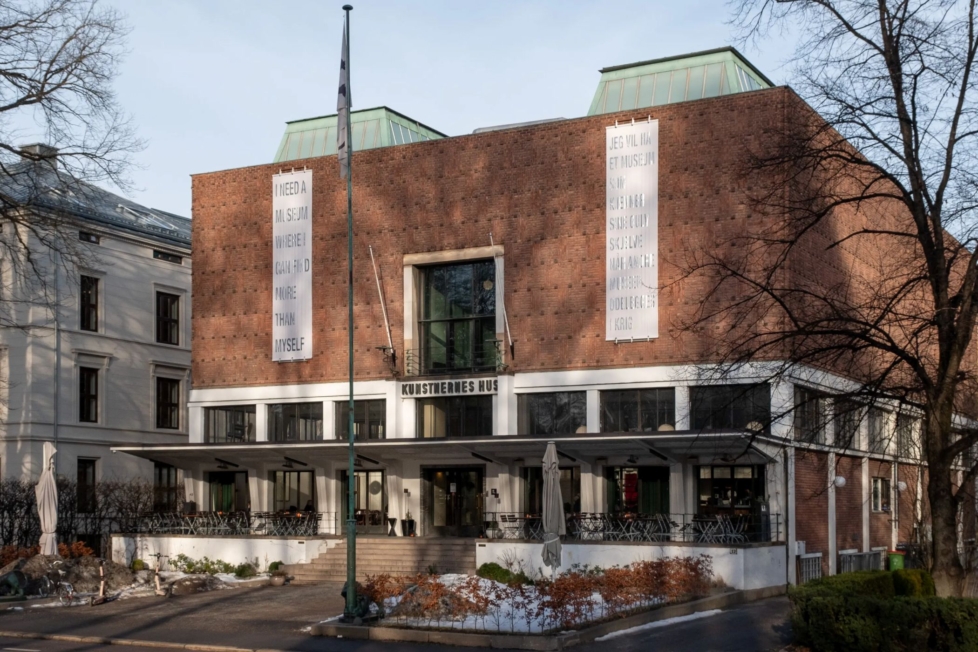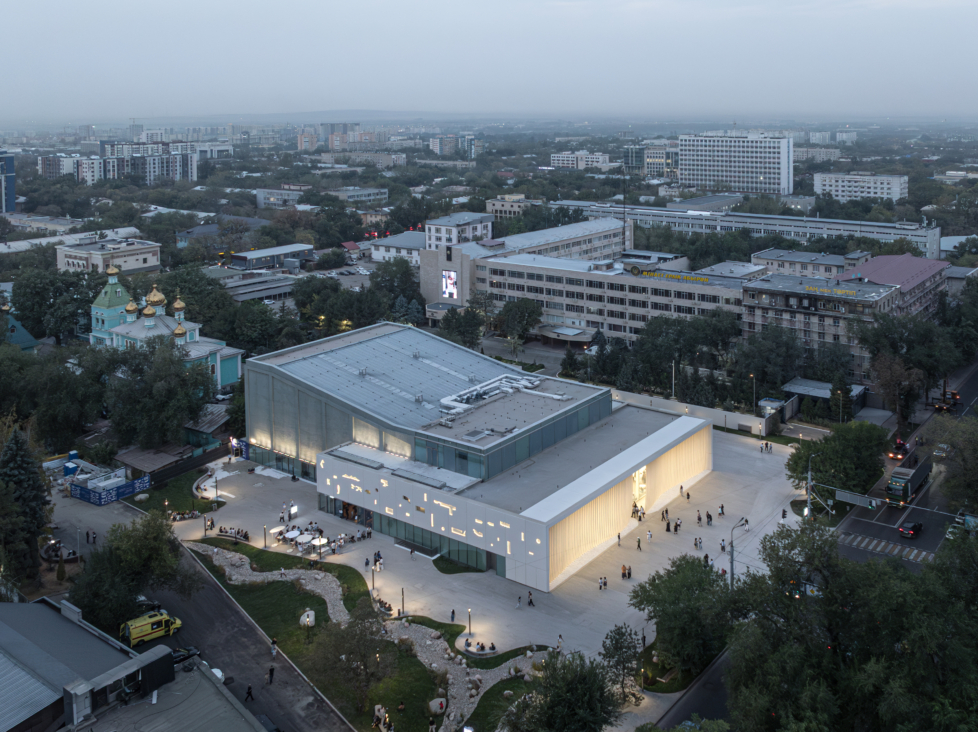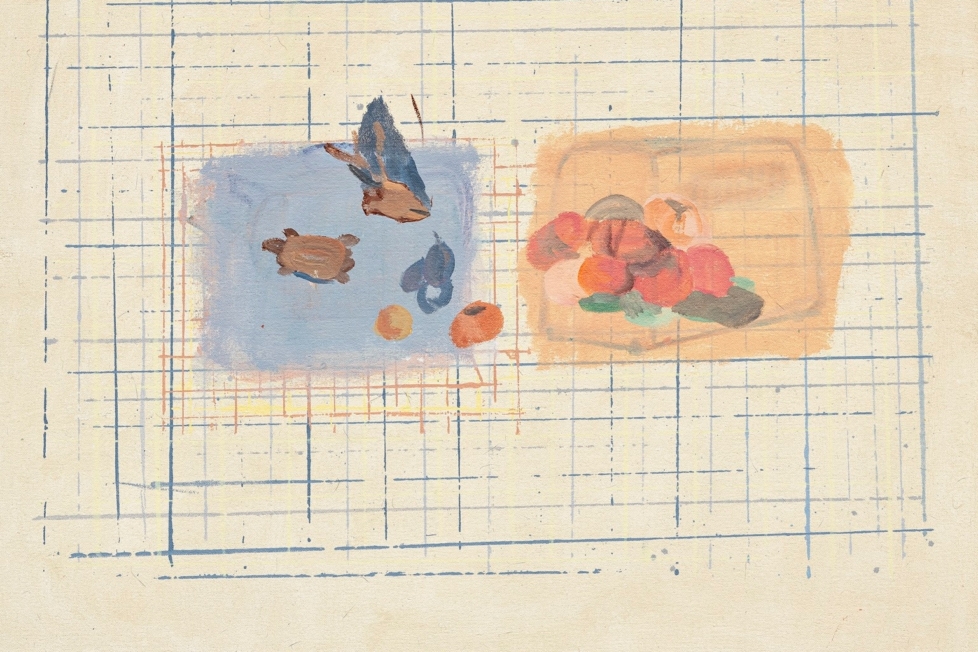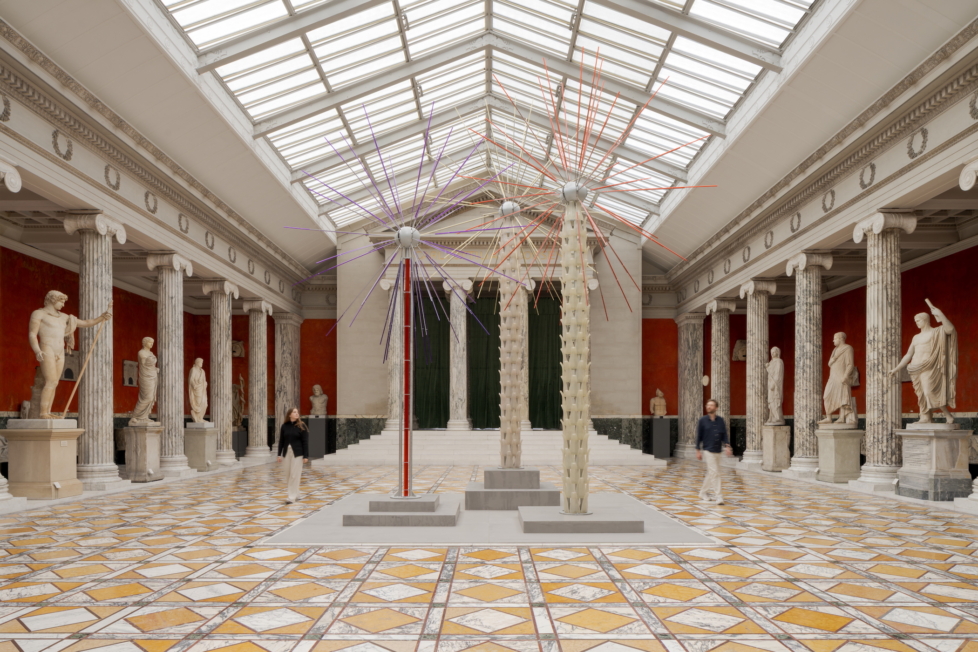
The final show of Bonner Kunstverein’s outgoing director of the Bonner Kunstverein, Fatima Hellberg – who will head Vienna’s museum of modern art, MUMOK, starting in October – is a goodbye. Philosopher of her own Ruin is sombre, nearly gloomy: the six-metre ceilings of the converted former flower market hall, through which natural light usually pours, have been lowered to the confined generic dimensions that you might associate with an office space. A little sunlight leaks in through tiny cracks, heightening a sense of theatricality.
Precise staging has become a hallmark of Hellberg’s curatorial practice. It’s a device she uses to create physical spaces to explore the intricacies of different strands of complex narratives. Her exhibition parcours – maybe at their most intense in the 2023 show The First Finger by Tolia Astakhishvili – have included cabinets or niches, allowing viewers to reflect on diverging scales and contexts. A second characteristic of Hellberg’s shows is her ability to develop finely spun narratives. Upon closer inspection, her projects often reveal themselves as an abundance of materials, edited down to an enticing, delectable format. Her comprehensive retrospective David Medalla – Parables of Friendship (2021–2022) serves as a prime example.
A third characteristic many of her shows share is a focus on collaboration and exchange, be it with institutions (organising shows in ‘chapters’ at venues across different towns, exploring different aspects of a body of work) or in long term collaborations, often spanning decades, with artists such as Annika Eriksson (Hellberg’s mother) or Gregg Bordowitz. Altogether, Hellberg’s curatorial projects demonstrate a keen interest in exhibition-making as an artistic form.
A kindred in spirit was the curator of Philosopher of her own Ruin, Alan Longino (1987–2024). An art historian and curator, he is perhaps best known for his research on the “quantum art” of Japanese artist Yutaka Matsuzawa (1922‒2006) at the University of Chicago, where he was pursuing his PHD, studying notions of visibility and invisibility. There he also realised four carefully crafted exhibition projects at Longino I.A.H., his own independent space, surreptitiously installed on weekends in a functioning classroom at the institute of art history (which echoes in the reduced dimensions of the Bonner Kunstverein).
Suffering from a long-term illness, Longino tragically passed away before the show came to fruition. However, he made his preparatory materials, sketches, and notes available to Hellberg and two of his friends, artist and author Andrew Christopher Green and MoMA curator Martha Joseph, who produced the show for him.
In the accompanying publication, the late curator describes the show as following “the path of an entity, once a person, who passed from a moment of hyper-visibility into invisibility at a critical juncture in their life.” He writes of this entity experiencing a “new freedom” once “their body had undergone a previously unknown transformation.”
This outlines a narrative for the project – a route that is lined with many reflections of the mysterious entity. It first appears in two photographs by Toyoko Tokiwa (1928-2019), known for her street photography in post-war Japan, focussing on working women, including prostitutes socializing with American soldiers. There is no innuendo in two photographs titled Oruku’s room (1956) though; instead, we see a cramped interior space with garments, kitchen utensils, and other objects stacked along the walls, all around a grumpy middle aged lady at the centre, who glares at us defiantly in one image and lights a cigarette in the other. Adjacent, a small vitrine houses two of Susan Hiller’s Painting Blocks (1980), previously exhibited paintings that have been cut up and sown together to form brick-like blocks. Not only have these paintings been taken out of visual circulation, they’ve been transformed into something new.


“This new body plays with the dereliction of value – they don’t need anything you have to offer,” Longino writes. The parallels with his own battle with cancer and an interest in women’s bodies changing with age is evident in the choice of another prominent voice, the poet Lisa Robertson, who is absent in the exhibition, but features prominently in the accompanying publication, lent the show its title. In her ‘Proverbs of a She-Dandy’ (2018), a prose poem in a series of aphorisms, is centred on describing a protagonist, the menopausal dandy: “Her obsolescence is indispensable to her work with resistance. She will have become the philosopher of her own ruin, which is also the ruinousness of capital.”
In the main room, the entity reveals and hides in a photograph by Miyako Ishiuchi, titled Mother‘s #54 (2002) it shows an emptied lipstick that from afar looks like a bullet casing, an ambiguous memorial. Next to it we find three small but intensely colourful untitled watercolours on “ghost money,” rice paper with a patch of metallic foil, to be burned in Asian rituals of worship, by Dusti Bongé, a self-taught modernist painter from Biloxi, Mississippi, Longino’s birth city.
Sydney Schrader’s series of untitled painted studies of human bodies pale against his elegant bent steel wall piece Emil (2025), hanging from one precarious screw, a study on tension and fragility. A video loop by Anna Bella Geiger Passagens 1 (1974), follows a young woman hurrying from her apartment into ever larger streets of Rio de Janeiro, then under dictatorial rule, against a backdrop of street noises, up endless flights of stairs taking up more and more space in the screen.
Linda Semadeni’s Schrank (Closet, 2017), made of unfired clay adorned with drawn body parts, sits in a vitrine, somewhere in between model furniture and a body. It shares a dreamlike quality with the large, somewhat sluggish painting by Bertram Schmiterlöw, Sömnen (The Sleep, 2000), of a human figure floating upwards in mid-air with its head reversed. Rosemarie Castro’s sculpture Sarcophagus Self-Portrait (1994) presents the silhouette of the artist emerging straight from the wall.
Closing the show is a room full of Semadeni’s unframed drawings, mainly in pen, marker, and pencil on sheets of A4 paper tacked directly on the walls to fill the entire room: a feeling, a feeling, a feeling, a feeling (2025). All of the drawings contain the same basic sentence scribbled in endless variations, “I Am Not a Nice Girl,” as if the artist were channelling a female version of Jack Nicholson’s obsessed character in Stanley Kubrick’s The Shining (1980). Here it rather feels like different individuals writing the sentence to mean a variety of different things, especially when the “not” occasionally turns into “hot” and the narration on identity suddenly oscillates, with resilience, even empowerment.
Leaving the exhibition on this note felt good, but bittersweet. I was sad for the loss of a powerful independent and poetic curatorial voice in Longino. But I was also grateful for having been introduced to his renegade wit, and was impressed and inspired by the humility and creativity of the exhibition’s organisers. This show was clearly a labour of love, which leaves viewers with expectations for the future. Where others would have celebrated their own achievements, Hellberg allows for a deep and intense reflection on death, identity, and transformation. It’s an intimate subject.
Her arrival in Vienna reflects a significant generational shift in a vital and internationally trending art scene. But the question arises: will she, as director, be able to bring her unique sensibility to the largest Austrian museum for contemporary art? In terms of scale alone, it’s a challenge to fill the museum’s huge exhibition halls – not to speak of managing the expectations of an audience easily ten times the size of Bonner Kunstverein’s. But, then again, we have seen Hellberg deal with complicated narratives. Hello, Vienna!













